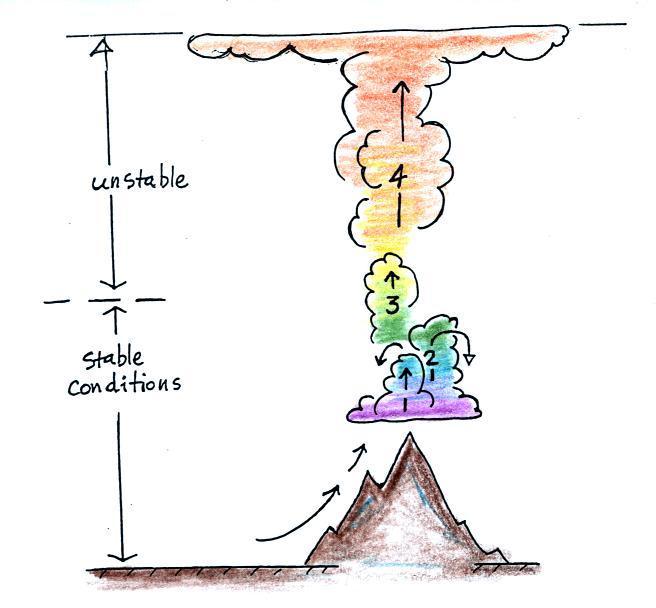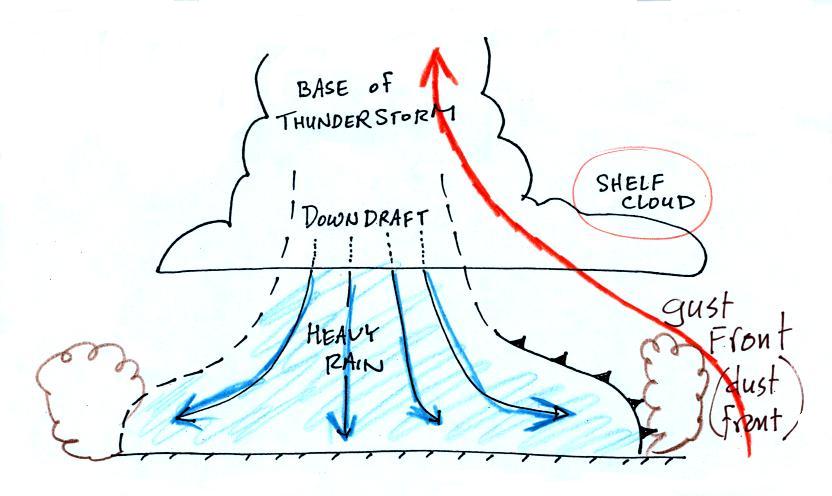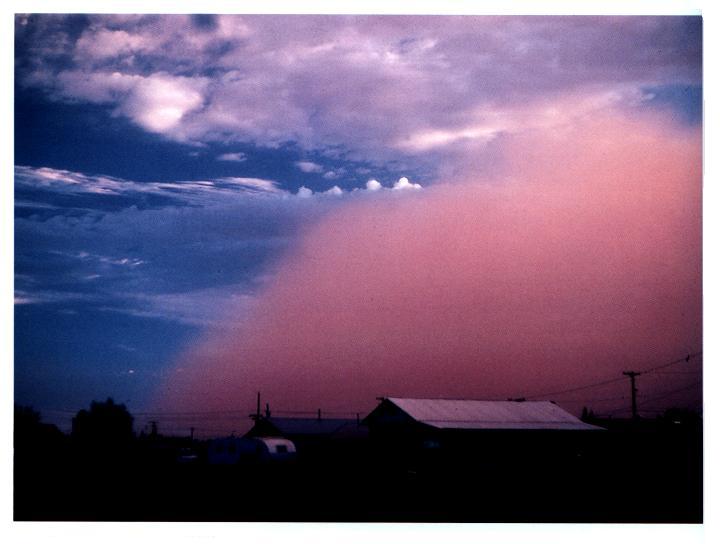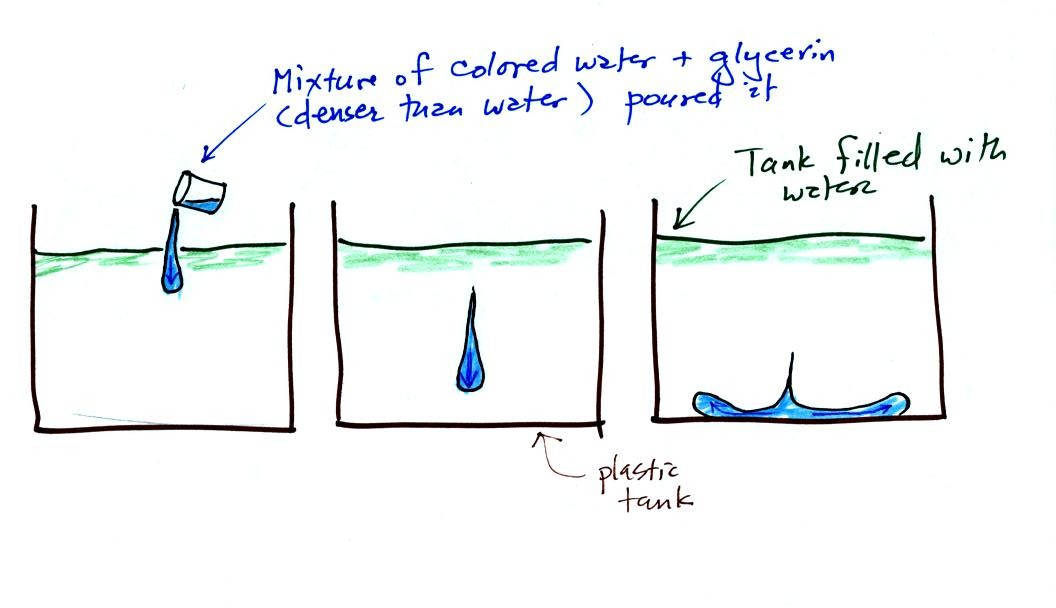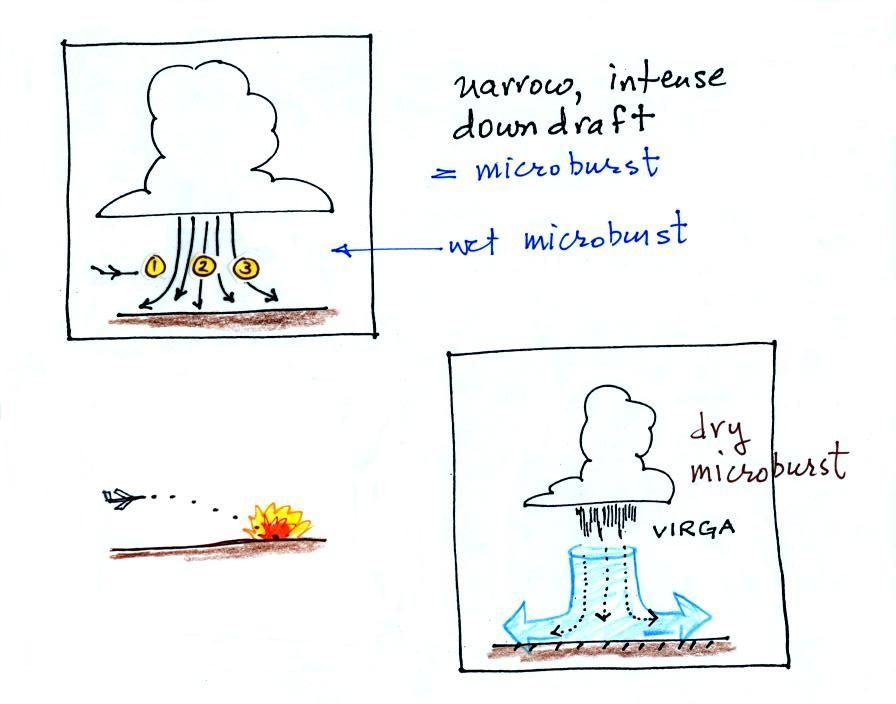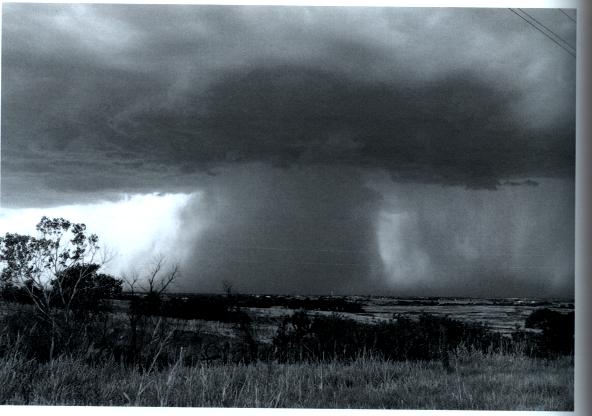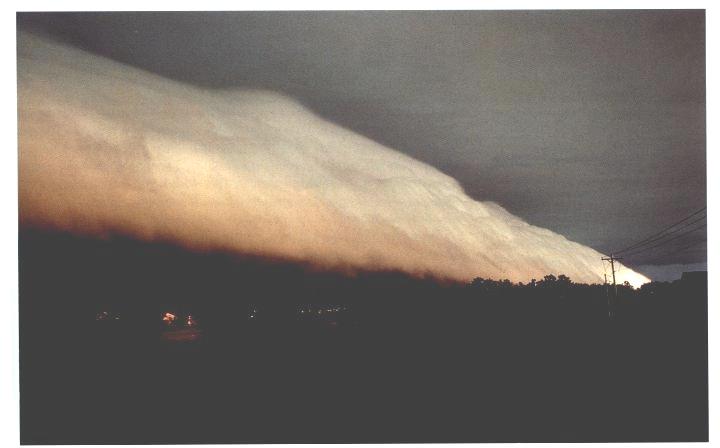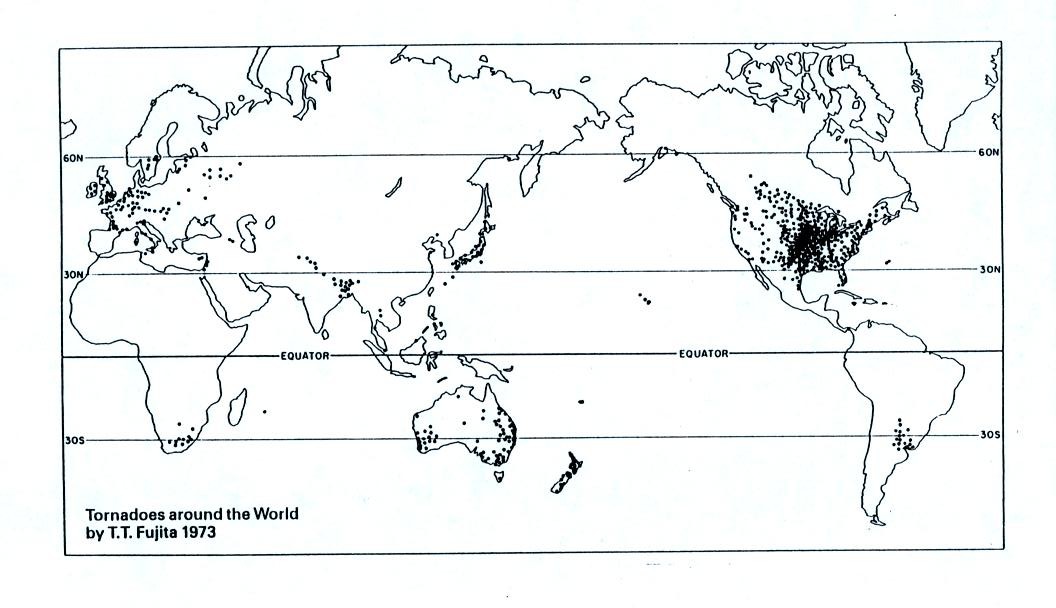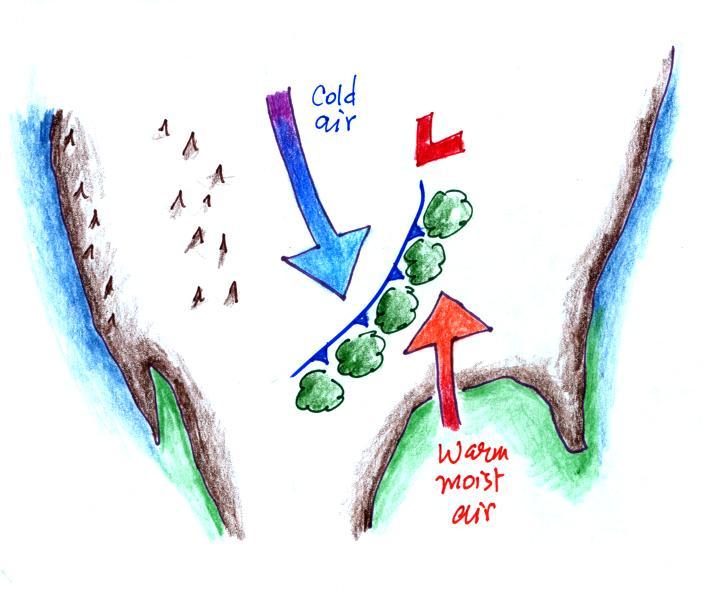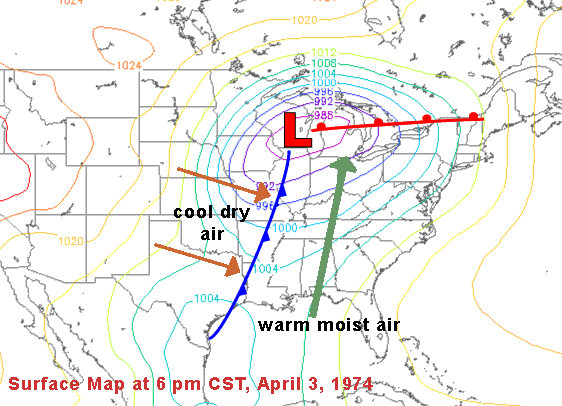Friday Nov. 18, 2011
click here to
download today's notes in more printer friendly format
The El Tour de Tucson bicycle race/ride is Saturday so some
bicycle racing instead of music before class this morning. We saw
the
last few kilometers up the infamous Mont Ventoux from the 2000 Tour de
France. Marco
Pantani just edged out Lance Armstrong at the finish line. Here are the
last couple of minutes of the race.
Quiz #4 Stude Guide Pt. 2 is now
online. It is relatively short and lists the times and locations
of the reviews. Quiz #4 is the Wednesday after Thanksgiving (Nov.
30).
Here's
another picture of the day. Peppers from my vegetable
garden, just in time for Thanksgiving.
The events leading up to the initiation of a summer air mass
thunderstorm (something we looked at in detail in class on Wednesday)
is
summarized in
the figure below. It takes
some
effort and often a good
part of the
day before a thunderstorm forms. The air must be lifted to just
above the
level of free convection (the dotted line at middle left in the
picture). Once air is lifted above the level of
free
convection it finds itself warmer and less dense that the air around it
and
floats upward on its own. I've tried to show
this with colors below. Cool colors below the level of free
convection because the air in the lifted parcel is colder and denser
than its surroundings. Warm colors above the dotted line indicate
parcel air that is
warmer and less dense than the surroudings. Once the parcel is
lifted above the level of free
convection it becomes bouyant; this is the
moment at
which the air mass thunderstorm begins.
Once a
thunderstorm develops it then goes through 3 stages.
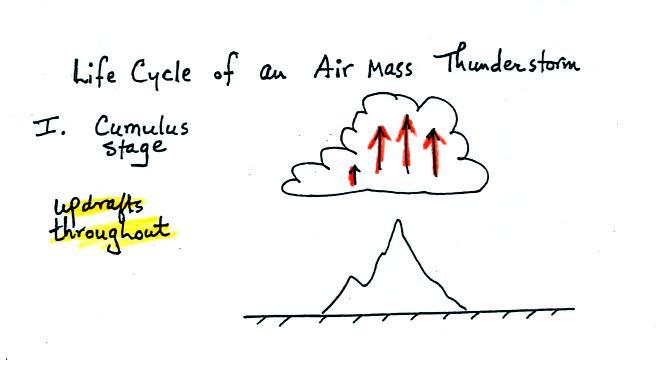
In the
first stage you would only find updrafts inside the cloud (that's all
you need to know about this stage, you don't even need to remember its
name).

Once precipitation has formed and grown to a certain size, it will
begin to
fall and drag air downward with it. This is the beginning of the
mature
stage where you find both an updraft and a downdraft inside the
cloud.
The falling precipitation will also pull in dry air from outside the
thunderstorm (this is called entrainment). Precipitation will mix
with
this drier air and evaporate. The evaporation will strengthen the
downdraft
(the evaporation cools the air and makes it more
dense).
The thunderstorm is strongest in the mature stage. This is when
the
heaviest rain, strongest winds, and most of the lightning occur.
Eventually the downdraft spreads
horizontally throughout the inside of
the
cloud and begins to interfere with the updraft. This marks the
beginning of the end for this thunderstorm.
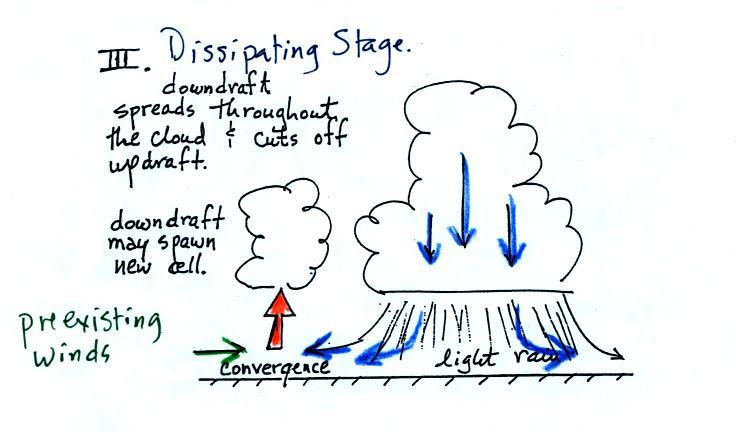
The
downdraft eventually fills the interior of the cloud. In this
dissipating stage you would only find weak downdrafts
throughout the cloud.
Note how the winds from one
thunderstorm can cause a region of
convergence on
one side of the original storm and can lead to the development of new
storms. Preexisting winds refers to winds that were blowing
before the
thunderstorm formed. Convergence between the prexisting and the
thunderstorm downdraft winds creates rising air that can initiate a new
thunderstorm.
The
picture below shows some of the features at the base of a thunderstorm.
The cold downdraft air spilling out of
a
thunderstorm hits the ground
and
begins to move outward from underneather
the
thunderstorm. The leading edge of this outward moving air is
called a
gust front. You can think of it as a dust front because the gust
front
winds often stir up a lot of dust here in the desert southwest (see
below).
The
gust front in this picture (taken
near Winslow, Az) is moving from the right
to the
left. Visibility in the dust cloud can drop to near zero which
makes this
a serious
hazard to automobile traffic. Dust storms like this are
sometimes called "haboobs".
There's lots of video on YouTube of an impressive dust storm this
past summer. Here's an example from
Gilbert Arizona. Another from
South Mountain.
Just to hammer home the idea of what a gust front might look like I
showed another (the last) of my homemade videos.
A large plastic
tank was filled
with water, the water represents air in the
atmosphere. Then a colored mixture of water and glycerin, which
is a
little denser than water, is poured into the tank. This
represents the
cold dense air in a thunderstorm downdraft. The colored liquid
sinks to
the bottom of the tank and then spreads out horizontally. In the
atmosphere the cold downdraft air hits the ground and spreads out
horizontally. These are the strong winds that can reach 100 MPH.
A
narrow intense downdraft is called a microburst. At the ground
microburst winds will sometimes reach 100 MPH (over a limited area);
most
tornadoes have winds of 100 MPH or less. Microburst winds can
damage
homes (especially mobile homes that aren't tied to the ground), uproot
trees,
and seem to blow over a line of electric power poles at some point
every summer
in Tucson.
Microbursts
are a serious threat to
aircraft
especially when they are close to the ground during landing or
takeoff.
An inattentive pilot encountering headwinds at Point 1 might cut back
on the
power. Very quickly the plane would lose the headwinds (Point 2)
and then
encounter tailwinds (Point 3). The plane might lose altitude so
quickly
that it would crash into the ground before corrective action could be
taken. Microburst associated wind shear was largely responsible
for the crash of Delta Airlines Flight 191 while landing at the Dallas
Fort Worth airport on Aug. 2, 1985 (click here to watch a
simulation of the final approach into the airport, I don't show it in
class because it contains some of the actual cockpit communications).
Falling rain could warn of a (wet)
microburst. In other cases,
dangerous
dry microburst winds might be invisible (the virga,
evaporating
rain,
will
cool
the
air,
make
the
air
more
dense, and
strengthen
the downdraft winds).
Here's
a picture of a wet microburst, a narrow intense thunderstorm downdraft
and
rain.
Here are three microburst videos from
YouTube.
The first
video shows a microburst from some distance away. The second video was
taken in the heavy rain and strong winds under a thunderstorm in the
microburst. You'll see a power pole snapped in half by the
microburst winds at about 2:26 in the video. Here's
a
third video
of a microburst that hit Princeton KS in July 2009. Someone
watching the storm estimated the winds were at least 90 MPH.
The
following picture shows a
shelf
cloud.
Warm
moist air if lifted by the cold air behind the gust front which is
moving from left
to right in this picture. The shelf cloud is very close to the
ground, so
the warm air must have been very
moist because it didn't have to rise and cool much before it became
saturated and a
cloud
formed. Here are a couple of pretty good videos (Grand Haven, MI
and Massillon, OH)
The
United
States
has
more
tornadoes
in an
average year than
any
other country in the world (over 1000 per year). The
central
US
has
just
the
right
mix
of
meteorological
conditions.
Note
the
author
T.T.
Fujita "Mr. Tornado."
I got a little carried away with
the colored pencils on this picture. Without
any
mountains
in
the way, cold
dry
air can move in the spring all the way
from
Canada to the Gulf Coast. There is collides with warm moist air
from the Gulf of Mexico to form strong cold fronts and thunderstorms.
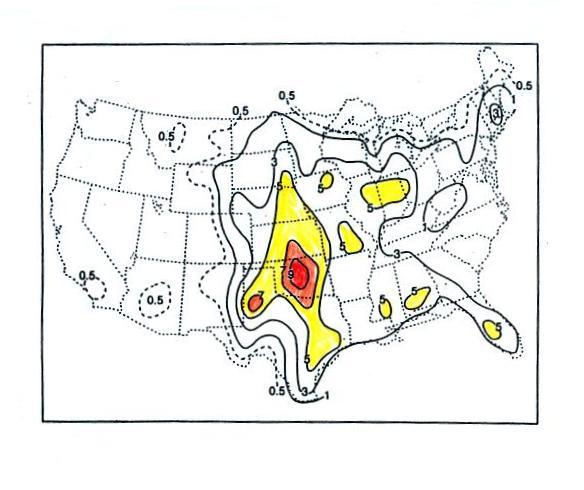
Tornadoes
have
been
observed
in
every
state in the US, but tornadoes are most frequent in the central
plains, a region referred to as "Tornado Alley" (highlighted in red,
orange, and yellow above). You'll
find this map on p. 161 in the photocopied ClassNotes.
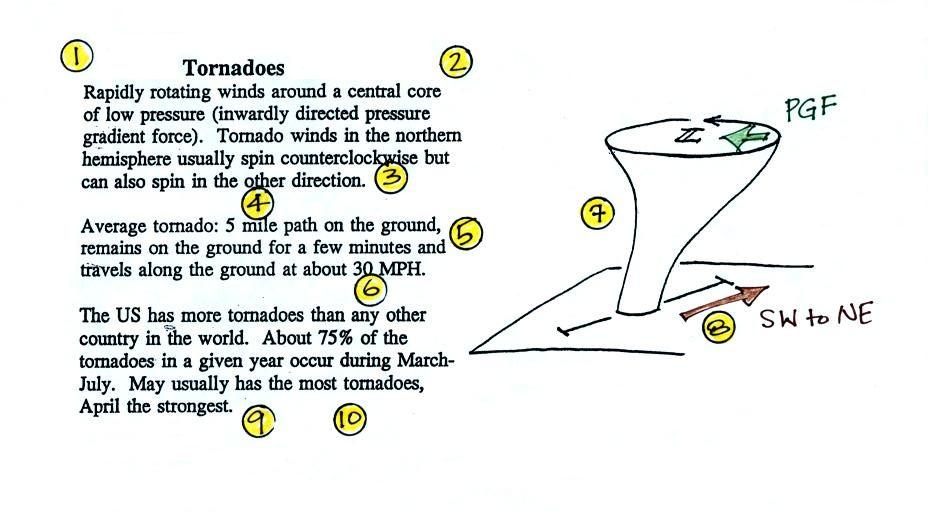
Here are some basic
tornado
characteristics (the figure above is also on p. 161)
1. About 2/3rds of tornadoes
are F0 or F1 tornadoes (we'll learn moare about the Fujita scale used
to rate
tornado intensity later today and next week) and have spinning
winds of
about 100 MPH or less. Microburst winds can also reach 100
MPH. Microbursts are much more common in Tucson in the summer
than tornadoes and can inflict
the same level of damage.
2. A very strong inwardly directed pressure
gradient force is needed to keep winds spinning in a circular
path. The pressure in the center core of a tornado can be 100 mb
less than
the pressure in the air outside the tornado. This is a very large
pressure difference in such a short distance. The
PGF
is
much
stronger
than
the
Coriolis Force (CF) and the CF can be
neglected.
3. Because the Coriolis force doesn't play a
role, tornadoes can spin clockwise or
counterclockwise, though
counterclockwise rotation is more common. This might be because
larger scale motions in the cloud (where the CF is important, might
determine the direction of spin in a tornado).
4, 5, 6. Tornadoes usually last only a few
minutes, leave a path
on the ground that is a few miles
long, and move at a few 10s of MPH. There are exceptions, we'll
look at one shortly.
7, 8. Most tornadoes
move from the SW toward the NE. This is because tornado-producing
thunderstorms are often found just ahead of a cold front. Winds
ahead of a cold front often blow from the SW. Most
tornadoes
have
diameters
of
tens
to
a
few
hundred
yards
but
tornadoes
with
diameters
over
a mile have been observed.
9, 10. Tornadoes
are
most
frequent
in
the
Spring.
The
strongest
tornadoes
also
occur
at
that
time
of
year. Tornadoes are most common in the late
afternoon when the atmosphere is most unstable.
We didn't
have time to cover the remaining material in class on Friday.
We'll
start
here next Monday. I'll include it here just to finish
with the material on p. 161.
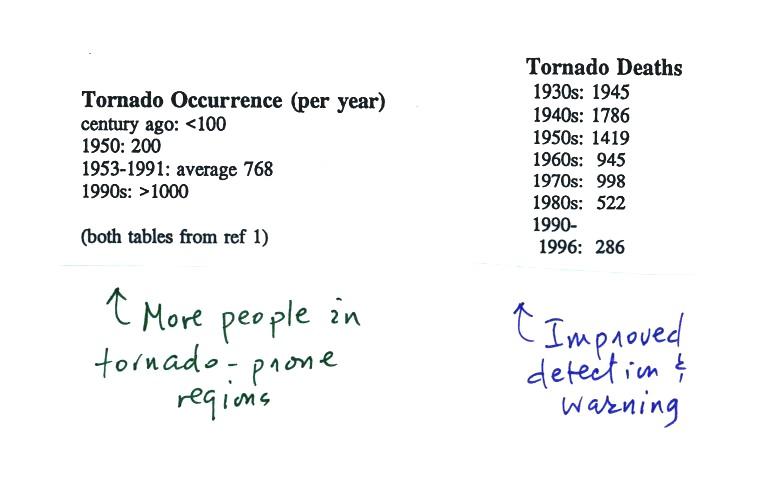
At the present time about 75 people
are
killed
every year in the
United States. This is about a factor of ten less than a century
ago due to improved methods of detecting tornadoes and severe
thunderstorms. Modern day communications also make easier to warm
people of dangerous weather situations. Lightning and flash
floods (floods are the most
serious
severe weather hazard) kill slightly more people. Hurricanes kill
fewer people on average than tornadoes.
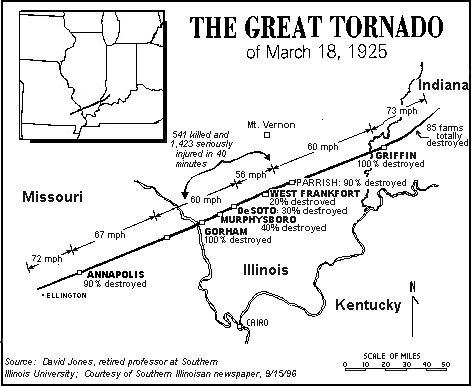
This
figure
traces
out
the
path of the 1925 "Tri-State
Tornado" . The
tornado path (note the SW to NE orientation) was 219 miles long, the
tornado lasted about 3.5 hours and
killed 695 people. The tornado was traveling over 60 MPH over
much of its path. It is the deadliest single tornado ever in the United
States. The Joplin
Missouri tornado
this past spring (May 22) killed 162 people making it the deadliest
since 1947 and the 7th
deadliest tornado in US history.
Tornadoes often
occur
in
"outbreaks."
The paths of 148
tornadoes
during the April 3-4, 1974 "Jumbo Tornado
Outbreak" are shown above. Note the first tornadoes were
located
in the upper left corner of the map. The tornadoes were produced
by thunderstorms forming along a cold front (see the weather map
below). During this two day
period the front moved from the NW part toward the SE part of the
figure.
Note
that all the tornado paths have a
SE toward NE
orientation.
The April
25-28,
2011
outbreak this year is now apparently the largest tornado outbreak
in US history (336 tornadoe, 346 people killed)
